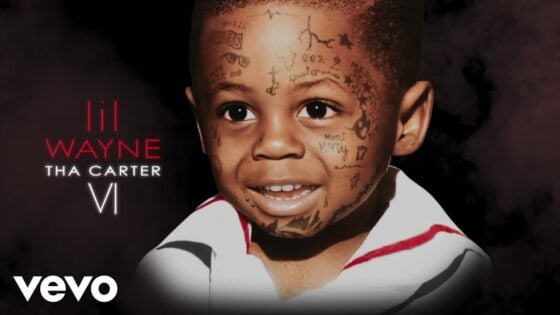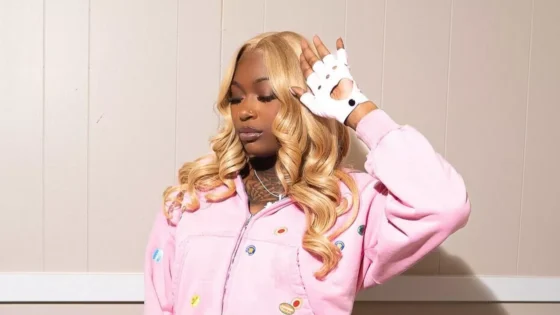Flashdance Retrospective
On April 15th, Flashdance will celebrate its 40th anniversary. The movie became a pop culture phenomenon in 1983, with its get-up-and-dance soundtrack and slick dance routines.
Flashdance was directed by Adrian Lyne and starred newcomer Jennifer Beals as protagonist, Alex Owens. The plot is a refreshing take on a typical Cinderella-story. Alex wiles her days away as a welder at a steel mill in Pittsburgh. At night, she dances onstage at a bar. Alex’s dream is to win a spot at a distinguished dance academy. She receives support from her friends, love interest Nick Hurley (Michael Nouri), and mentor Hanna Long (Lilia Skala). Alex attempts to follow her dreams, despite the obstacles of her background and lack of formal dance education.

Flashdance was a hit with audiences, grossing over $200 million worldwide, with a production budget of $7 million. The film was the third highest grossing film of 1983, and the highest grossing film of that year for Paramount Pictures.
The film was nominated for several Golden Globes in 1984, including a nomination for Beals for “Best Actress in a Motion Picture Musical/Comedy.” This movie put Beals on Hollywood’s radar and left audiences clamoring for more dance-centric films.
How Flashdance became a pop culture phenomenon
Critics and moviegoers had divergent opinions about the movie. In April 1983, film critic Roger Ebert called Flashdance “flashy,” and “waterlogged.” Some critics found the dizzying dance numbers distracted attention from the plot, while others argued that there was no plot to speak of. However, Beals’ charisma, the movie’s invigorating soundtrack, and the flashy dance sequences appealed to fans, and turned this Cinderella-story into a hit.
The 1980s were the setting of the aerobics exercise craze. Jane Fonda released her first home workout video in 1982, a year before Flashdance’s release. Fonda’s tape was an instant hit, leaving fans of aerobics clamoring for more dance options. Being released on the heels of Fonda’s hit video may have helped Flashdance find its like-minded audience sooner.

Flashdance stands out in movie history because of the characters’ unique style. Alex’s fashion reflected the popular styles of the times. Her style reflected a timeless approach to dancewear and was an homage to fashion trends of the 1980s. Her slouchy, off the shoulder sweatshirt, leotards, and tights are still staples in dance fashion.
There’s an underlying sense of emotional relatability to Flashdance. While every moviegoer may not dream of becoming a dancer, everyone has a dream. Alex’s passion for her craft is clear in her posture and demeanor. Beals’ dance scenes are so electric, the audience can’t help but cheer her on. Wishing to pursue a big dream, fear of failure, and feeling pressure to fit a social norm are parts of the human experience Flashdance gets right.
That catchy soundtrack
Irene Cara’s “Flashdance…What a Feeling” and Michael Sembello’s “Maniac” are the two songs most famously associated with Flashdance. At the 1984 Golden Globe Awards, Flashdance won “Best Song in a Motion Picture” for “Flashdance…What a Feeling” and “Best Score in a Motion Picture” for composer Giorgio Moroder.
Flashdance’s theme song made history. “Flashdance…What a Feeling,” became a number one pop hit in the United States in May 1983. Music and dance numbers were mediums of storytelling that conveyed the plot and emotional character arcs to the audience. The music filled in the blanks for the dialogue and exposition.
Flashdance’s songs resonated emphatically with fans partially because of MTV’s influence. MTV debuted in 1981, and its inception gave artists a platform to connect with fans through music. “Maniac” was a song that remained in rotation often in the early days of MTV.
By crafting catchy tunes the audience would go crazy for, music supervisor Phil Ramone, composer Giorgio Moroder, and the rest of the production team ensured their songs would hit the right notes with audiences. The soundtrack complimented the exhilarating dance routines. The array of upbeat anthems let fans relive the story, or rock out to their own story.
How Flashdance influenced the dance-movie genre
Alex’s unique style of dancing contains elements of ballet, jazz, tap, freestyle, and modern. Jeffrey Hornaday choreographed the dance numbers in Flashdance. Body doubles took on some of Alex’s more challenging dance sequences. French ballerina Marine Jahan performed that final dance number at the conservatory, although she was uncredited as Beals’ body double.
Flashdance set the stage for other dance movies of the 1980s, including other pop culture classics with memorable soundtracks, like Footloose and Dirty Dancing. Flashdance’s narrative became a formula for the dance-movie genre in subsequent decades. The narrative of the “talented dancer with a working class background, who finds romance and overcomes obstacles to achieve his/her dream of dancing at a prestigious institution” may seem familiar. This formula is present in other hit dance movies of the 1990s and 2000s, like Center Stage, Save the Last Dance, and Burlesque. Flashdance’s influence can still be found in current dance-centric movies, like Magic Mike’s Last Dance.

Although Flashdance turns 40 this month, its pop culture effects show no signs of slowing down. Fitness platforms are bringing back aerobics, dance movies still reign supreme, and 1980s fashion is having another moment in the spotlight. To celebrate Flashdance’s anniversary properly, grab your leotard, put on your off-the-shoulder sweatshirt, queue up “Flashdance…What a Feeling,” and start dancing like a maniac.



































Saul Davis
December 26, 2023 at 2:08 am
Betsy Haug was the first choreographer to work on the movie, and it may well be that a lot of the choreography was hers. She could not get Beals to dance. That’s why Hornaday was brought in, and he hired the dance double. So it may be that he only choreographed the solos by Beals, with all the running in place and aerobics. Betsy was a hot choreographer, so the Tina Tech number, and possible the one with the chair and the tv may likely have been her work. I am still striving to clarify that.